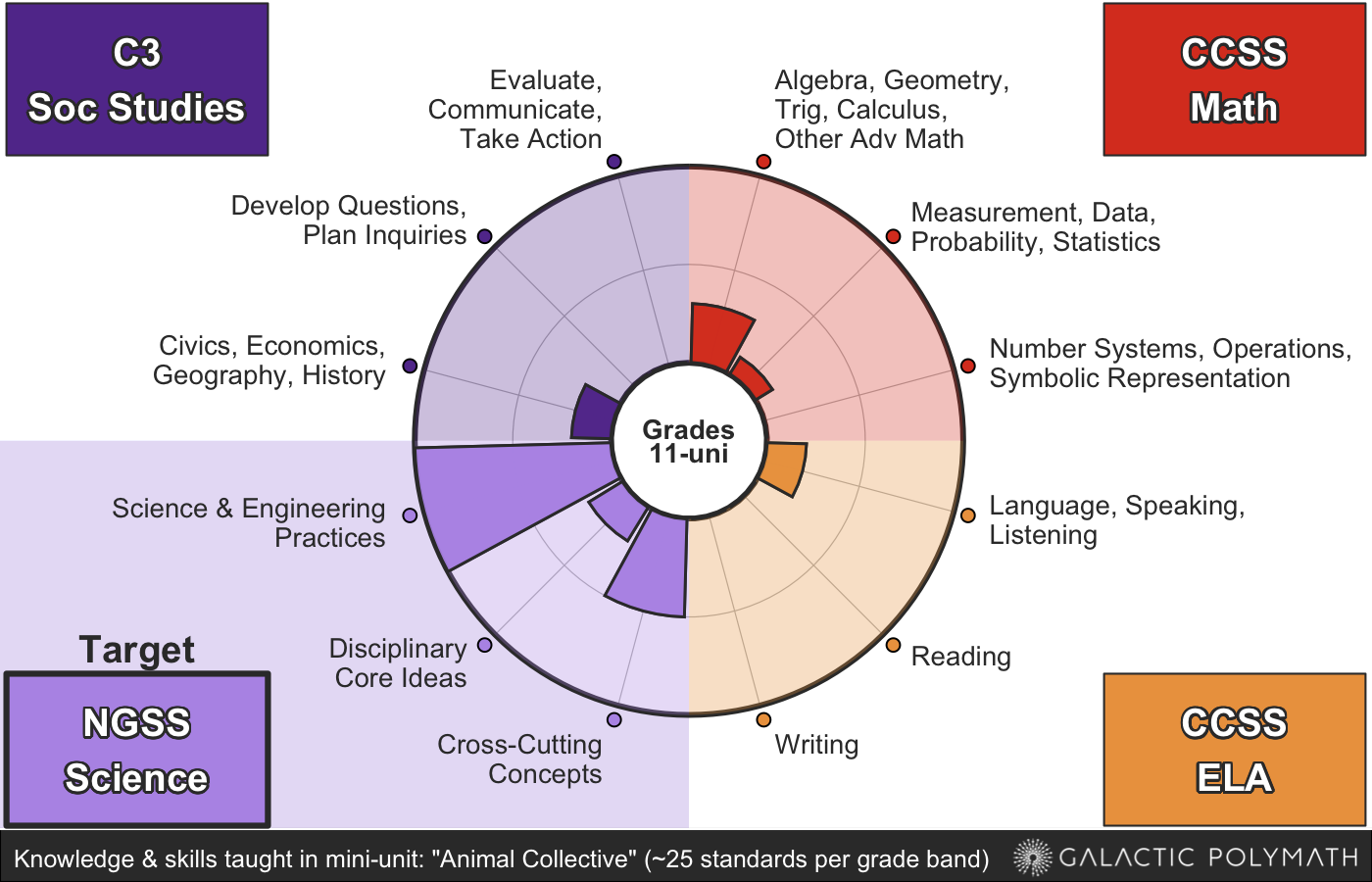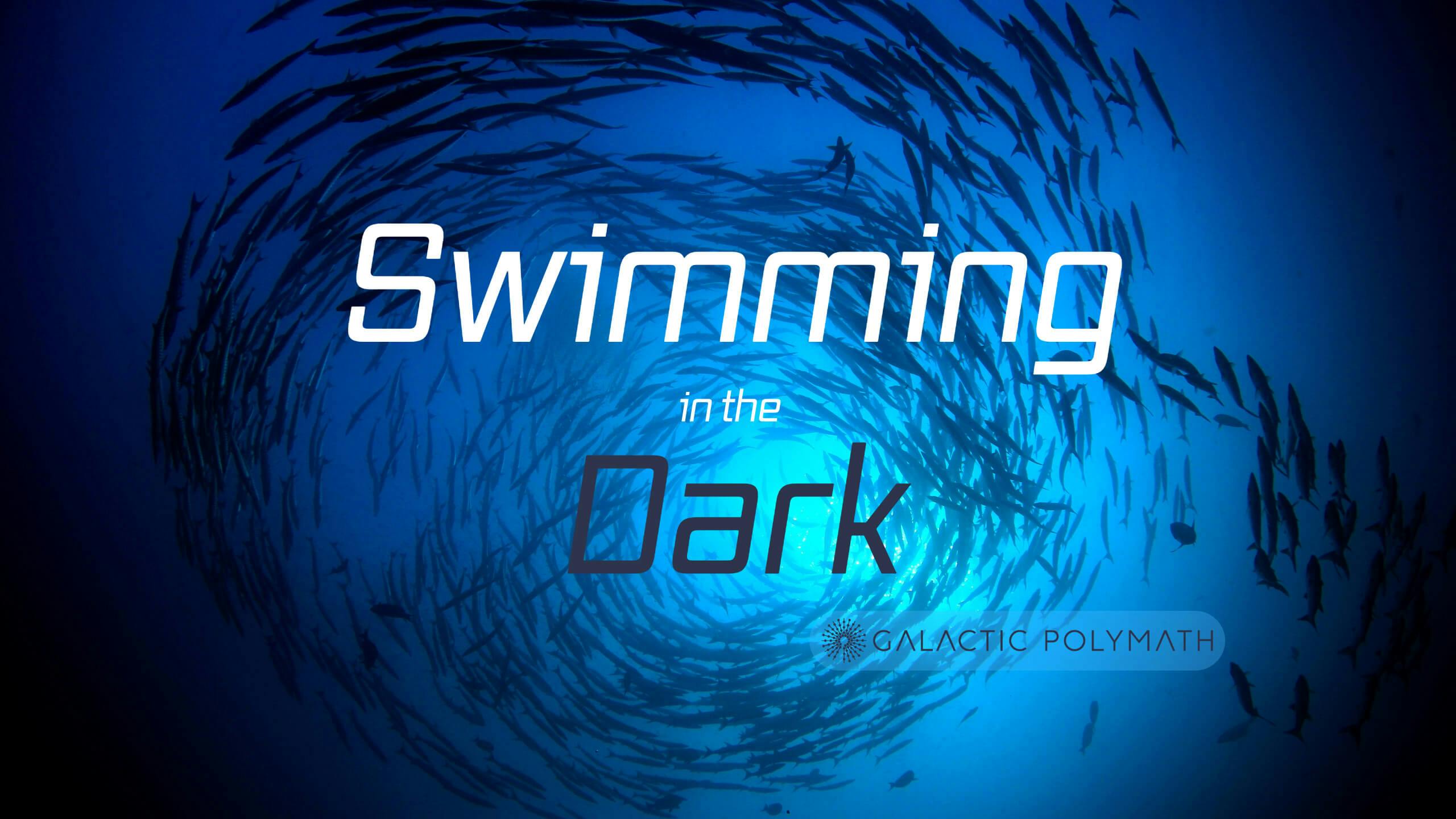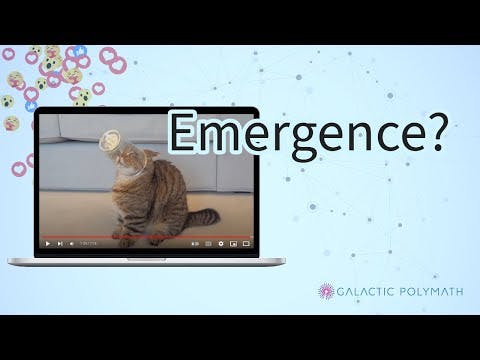- Overview
- Lesson Preview
- Teaching Materials
- Background
- Learning Standards
- Feedback
- Credits
- Acknowledgments
- Version Notes
- Overview
- Lesson Preview
- Teaching Materials
- Background
- Learning Standards
- Feedback
- Credits
- Acknowledgments
- Version Notes
Animal Collective
How group behavior can produce surprising problems...and solutions!

Sponsored by:
- Albert Kao's Lab at the University of Massachusetts Boston
- National Science Foundation

The Gist:
Students will draw their own social networks, ponder the meaning of complexity and begin to notice unexpected patterns that emerge around them, unnoticed. Through hands-on activities and digital experiments, students will discover how complexity research enriches our daily lives.
Target Subject:
Grades:
Estimated Time:
Target Subject:
ScienceGrades:
11-universityEstimated Time:
6 x 45 min

Subject breakdown by standard alignments
Driving Question(s):
- Why do humans and other animals live in groups?
- How do simple behavioral rules lead to emergence of novel properties at the group level? (i.e. How do animal flocks, market trends, and viral videos emerge from animal collective behaviors?)
- How do scientists use computer simulations and other tools to study emergence?
Hook(s):
- Creative, art-infused "draw your own social network activity"
- Active movement flocking simulation
- Mind-blowing interactive simulations of fish schooling and social network dynamics
Keywords:
animal behaviorcomplexityemergencegroup livingsimulationexperimentethology“Teach it in 15” Quick Prep
- Check out lesson multimedia below
- Look over Teaching Materials
- Read our easy Procedure
- Teach it and let us know what you think!
What makes a video go viral? Emergence!
Summarizes key take-homes from lesson 2. Students will have explored The Game of Life to discover what emergence means.
"Swimming in the Dark"
Run digital experiments to understand fish schooling.
"EchoSim" Echo Chamber Simulation
Explore how different human variables (like tolerance) affect social media networks.
6 x ~45 min
Available Grade Bands
Available Teaching Environments
Learning Objectives
Students will able to...
Draw a personal social media network to represent their connections to others.
Analyze their own social network to grapple with the meaning of complexity.
Apply their understanding of complexity to the study of animal behavior.
Understand how species that live in groups evolved this behavior through natural selection.
Materials for Grades 11-university
Lesson 1 Presentation
Need: WiFi, Computers for students and teacher, Projector, Sound
Lesson 1 Worksheet (Teacher Key)
Print 1
Student Worksheet (Lesson 1)
Print 1 Per Student
Lesson 1 Overview (Teacher Guide)
Steps & Flow
30 min: Engage
30 min: Engage
1.Create Your Social Network
Create Your Social Network
1.Create Your Social Network
Create Your Social Network
Using a blank sheet of paper and colored pencils, students are guided through drawing a detailed graphic of their social network to illustrate the complexity of living in groups.
- Complex: having a large network of interacting parts
13 min: Explore & Explain
13 min: Explore & Explain
2.Why do animals live in groups?
Why do animals live in groups?
2.Why do animals live in groups?
Why do animals live in groups?
Students learn about group living in animals and make predictions about types of benefits and costs. The role of natural selection is discussed when analyzing examples.
- Types of benefits: security, resource sharing, warmth, work sharing, improved health
- Types of costs: increased competition, spread of disease, predator attraction
- Natural Selection: the process through which organisms better adapted to their environment tend to survive and reproduce
3.Studying Complex Animal Behavior
Studying Complex Animal Behavior
3.Studying Complex Animal Behavior
Studying Complex Animal Behavior
Students are introduced to methods of studying animal groups, both in laboratory settings and the natural environment.
2 min: Conclusion
2 min: Conclusion
4.Summary & Preview
Summary & Preview
4.Summary & Preview
Summary & Preview
In the next lesson, students will dive into the unexpected group properties that arise from complexity.
Going Further
Ideas and resources for deepening learning on this topic.
The Wisdom and/or Madness of the Crowd
This is a very cool interactive you can have students go through to learn more about social networks. It goes into an example of how particular social network structures can lead to the fallacy that binge drinking is more common (and therefore acceptable) than it actually is. You can determine whether this is appropriate for your class.
Social networks and culture in birds
A video about how researchers at Oxford use remote monitoring and social network analysis to understand relationships and information sharing in the most well-studied, and unfortunately-named birds in the world: great tits (Parus major).
Learning Objectives
Students will able to...
Apply a simple algorithm (set of rules) to predict the behavior of The Game of Life computer simulation.
Discover emergence (an unexpected property arising from simple behavioral rules in a large group) by using The Game of Life.
Apply their understanding of complexity to the study of animal behavior.
Recognize emergent patterns in everyday life.
Materials for Grades 11-university
Lesson 2 Presentation
Need: WiFi, Computer, Projector, Sound
Lesson 2 Worksheet (Teacher Key)
Print 1
Lesson 2 Worksheet (Students)
Print 1 Per Student
Lesson 2 Overview (Teacher Guide)
Steps & Flow
5 min: Evaluate
5 min: Evaluate
1.Review
Review
1.Review
Review
Students review the definition of complexity by applying it to a video of starlings.
10 min: Engage
10 min: Engage
2.Introduction to the Game of Life
Introduction to the Game of Life
2.Introduction to the Game of Life
Introduction to the Game of Life
Students learn the basics of the Game of Life by John Conway.
The Game of Life is a computational thinking activity that serves as a gateway for students to discover emergence. The simple rules of the simulation lead to very unexpected patterns.
- Emergence: a property of a complex system that cannot be explained by the sum of its parts.
10 min: Explore
10 min: Explore
3.Manipulate & Test Game of Life
Manipulate & Test Game of Life
3.Manipulate & Test Game of Life
Manipulate & Test Game of Life
Using a computer simulation, students make predictions and conduct tests of the Game of Life.
Our video is threaded throughout the presentation to support student learning: ▶ What makes a video go viral? Emergence!
10 min: Explain & Elaborate
10 min: Explain & Elaborate
4.Connect Game of Life to Emergence
Connect Game of Life to Emergence
4.Connect Game of Life to Emergence
Connect Game of Life to Emergence
Students explain emergence using examples from the previous computer simulation.
10 min: Explore
10 min: Explore
5.Introduction to Emergence in Real Life
Introduction to Emergence in Real Life
5.Introduction to Emergence in Real Life
Introduction to Emergence in Real Life
Emergence in real life is introduced using the example of an online video going viral.
Going Further
Ideas and resources for deepening learning on this topic.
How Birds Do the Thing - Smarter Every Day 234
Have students watch this video to get them connecting emergence to starling flocking behavior. This will help them connect to the Lesson 3 analog flocking activity on a deeper level.
Boids Simulation
Let students play around with the flocking simulation described in the video. This is similar to the swimming simulation they'll do in Lesson 4, but is not directly connected to a scientific study, nor does it allow for digital experimental trials.
Crazier than you even imagined!
Share this video with students to introduce them to more mind-blowing complexities and programming applications of Conway's Game of Life.
"What Explains Bizarre Animal Behavior?"
A cool video featuring The Atlantic's Ed Yong, talking about animal culture and the emergence of trends.
Learning Objectives
Students will able to...
Explain how flocking and schooling represent emergent properties that arise from simple rules operating in a complex group.
Do a physical (analog) simulation to test if simple rules can reproduce schooling/flocking behavior.
Deeply understand how abstract parameters like following distance and cohesion translate into group movement patterns.
Materials for Grades 11-university
Lesson 3 Presentation (optional)
Need: WiFi, Computer, Projector, Sound
Lesson 3 Rule Cards (optional)
Print a few copies as visual aids
Lesson 3 Overview (Teacher Guide)
Steps & Flow
10 min: Getting Started
10 min: Getting Started
1.Introduction
Introduction
1.Introduction
Introduction
Use the detailed teacher guide to lead students in a discussion of the three basics of flocking behavior; alignment, cohesion, and separation.
The flocking activity is a kinesthetic gateway for students to discover emergence. The simple rules they will follow will lead to unexpected patterns.
Be sure that students understand the rules and expectations of this fun flocking activity before beginning.
25 min: Engage
25 min: Engage
2.Flock This Way!
Flock This Way!
2.Flock This Way!
Flock This Way!
Students go through multiple rounds of the flocking activity in a gymnasium or outdoors.
10 min: Explain, Elaborate, Evaluate
10 min: Explain, Elaborate, Evaluate
3.Reflect
Reflect
3.Reflect
Reflect
With guided reflection questions, students discuss or write about what they observed and learned about emergence during the flocking activity.
Optional activity variations are provided to test predictions about emergence and extend learning.
Going Further
Ideas and resources for deepening learning on this topic.
Overview of Dr. Iain Couzin's Lab at the Max Planck Institute of Animal Behavior
Optional homework assignment: watch this video to learn about the field of animal collective behavior research. (This video centers on the lab of Dr. Iain Couzin, who does similar work to the unit sponsor Dr. Albert Kao and was Albert's PhD advisor when they were both at Princeton).
Learning Objectives
Students will able to...
Explain how flocking and schooling represent emergent properties that arise from simple rules operating in a complex group.
Connect their analog physical activities in Lesson 3 to a computer simulation of fish schooling.
Run digital experiments to analyze how simulation parameters affect the group movement behavior of digital fish.
Compare digital experimental results to real scientific results to better understand the nature of science.
Materials for Grades 11-university
Lesson 4 Presentation
Need: WiFi, Computer, Projector, Sound
Lesson 4 Worksheet (Teacher Key)
Print 1
Lesson 4 Worksheet (Student)
Print 1 Per Student
Steps & Flow
10 min: Evaluate
10 min: Evaluate
1.Review
Review
1.Review
Review
Students review the definition of emergence by recalling real-life examples. Through guided discussion, students recall the experimental methods of studying emergence from lesson 1.
10 min: Engage & Explore
10 min: Engage & Explore
2.Introduction to Swimming in the Dark Simulation
Introduction to Swimming in the Dark Simulation
2.Introduction to Swimming in the Dark Simulation
Introduction to Swimming in the Dark Simulation
Can we use a simulation to understand the schooling behavior of shiners? With guided exploration questions, students engage with the Swimming in the Dark simulation of schooling behavior.
20 min: Experiment
20 min: Experiment
3.Gather and Analyze Data
Gather and Analyze Data
3.Gather and Analyze Data
Gather and Analyze Data
Students gather data to understand more about individual "rules" that contribute to emergence of schooling behavior in shiners.
10 min: Evaluate
10 min: Evaluate
4.Form Conclusions and Apply Insight
Form Conclusions and Apply Insight
4.Form Conclusions and Apply Insight
Form Conclusions and Apply Insight
Students interpret data from a related study of collective shiner behavior and relate it back to the conclusions from their experiment.
Going Further
Ideas and resources for deepening learning on this topic.
Scientific Paper: "Fisheries-induced selection against schooling behaviour in marine fishes"
This lesson enabled students to understand factors driving schooling behavior. As an extension, have them grapple with Dr. Kao and collaborators' research into how the fisheries industry selects against schooling behavior.
Learning Objectives
Students will able to...
Apply the concepts of complexity and emergence to the flow of information in social media networks.
Run simulations to test how different factors (such as unfriending rate or tolerance) affect social media network structure.
Use a digital simulation of social media networks to understand how echo chambers emerge in social media.
Evaluate how their own decisions on social media affect broader (emergent) patterns, such as the formation or breakdown of echo chambers.
Materials for Grades 11-university
Lesson 5 Presentation
Need: WiFi, Computer, Projector, Sound
Lesson 5 Worksheet (Teacher Key)
Print 1
Lesson 5 Worksheet (Student)
Print 1 Per Student
Steps & Flow
5 min: Evaluate
5 min: Evaluate
1.Review
Review
1.Review
Review
Students briefly review conclusions from the previous experiment and discuss ideas about how "schools of thought" emerge online.
20 min: Engage
20 min: Engage
2.Introduction to the EchoDemo Simulation
Introduction to the EchoDemo Simulation
2.Introduction to the EchoDemo Simulation
Introduction to the EchoDemo Simulation
How do simple human tendencies affect the emergent properties of opinions and friendships? With guided group discussion, students are introduced to the EchoDemo simulation of online social networks.
10 min: Explore
10 min: Explore
3.Discover Emergent Online Behavior
Discover Emergent Online Behavior
3.Discover Emergent Online Behavior
Discover Emergent Online Behavior
Students manipulate variables including unfriending, tolerance, and influence to discover the emergence of online echo chambers.
- Echo chamber: an environment where people hear only opinions that reflect and reinforce their own.
10 min: Explain & Elaborate
10 min: Explain & Elaborate
4.Make Connections & Share Opinions
Make Connections & Share Opinions
4.Make Connections & Share Opinions
Make Connections & Share Opinions
After watching a short news clip about echo chambers, students connect what they learned during the EchoDemo simulation to real life. Analysis questions allow students to share opinions and engage in discussion/debate.
Going Further
Ideas and resources for deepening learning on this topic.
Scientific Paper: "Growing polarization around climate change on social media"
Have advanced students grapple with this fascinating study published in the top journal Nature. Builds on topics from this lesson.
Popular Press: "#ClimateScam: denialism claims flooding Twitter have scientists worried"
A popular press article in The Guardian citing the above study. May be polarizing, so you will be the best judge of whether this is a good article for your class to discuss.
Materials for Grades 11-university
Lesson 6 Overview (Teacher Guide)
Print 1
Steps & Flow
45 min: Ideas for Further Learning
45 min: Ideas for Further Learning
1.Examine Your Own Social Network
Examine Your Own Social Network
1.Examine Your Own Social Network
Examine Your Own Social Network
Have students examine their own social media network and consider the friends, groups, and influencers they are connected to and follow. How different are the opinions that they see and hear? Do different “schools of thought” exist? What is their own unfriending behavior? Tolerance level?
2.Engage in Debate
Engage in Debate
2.Engage in Debate
Engage in Debate
Potential debate prompts include:
- "social media fuels echo chambers"
- "influencer content should be moderated"
- "social media can facilitate collective action on global challenges"
3.Host a Socratic seminar or Harkness discussion
Host a Socratic seminar or Harkness discussion
3.Host a Socratic seminar or Harkness discussion
Host a Socratic seminar or Harkness discussion
Students can prepare for structured discussions around questions such as:
- "What can individuals do to ensure they stay open-minded and exposed to a variety of ideas?"
- "Should social media be reformed? Should there be limits placed on posting, reposting, friending, or unfriending?"
- "What makes someone a social media influencer, and what responsibilities should come with the status?"
Materials for Grades 11-university
Student Assessment
Teacher Assessment
Connection to Research
This unit was created with support and in close collaboration with Dr. Albert Kao, an Assistant Professor at UMass Boston. The lessons do not directly tie into his work, but Lesson 4 centers on closely related work by his collaborators into the underlying behavioral rules that lead fish to form schools. Specifically, for this lesson we created the "Swimming in the Dark" simulation that allows students to run digital experiments to understand fish schooling behavior. The worksheet connects these activities to actual results from a paper in the journal Science (see below), which the lesson parallels.
Lesson 5 ties into a different body of research on how and why echo chambers form in human social media networks. Using another app we developed "EchoSim," students run another set of experiments, tinkering with different parameters (like tolerance to differing ideas or unfriending tendency) to see how they affect the structure of friendships and the flow of information. The simulation is based on code from Dr. Hao Peng, which he developed to support a paper he co-authored: Social influence and unfollowing accelerate the emergence of echo chambers.
All the other lessons support understanding and engagement in these complex bodies of research through creative activities.
Research Background
Dr. Albert Kao studies the fascinating and interdisciplinary field of collective behavior. Collective behavior was coined to describe activities of large, loosely organized groups of people (like fads, cults, flash mobs, riots, and the like.) In recent decades, scientists such as Albert and his colleagues have expanded this definition to include other animal species such as ants, bees, great apes, and fish that live in large groups. In both humans and many group-living animal species, scientists are keen to understand how simple behavioral rules of individuals scale up to produce emergent properties that are present at the group-level, but that individuals don't have. Emergent properties like stampedes can obviously happen in human and animal populations, but recent advances in motion tracking of individual behavior and movements has allowed scientists to recognize other unexpected parallels between human and animal collective behavior--such as wisdom of the crowd and traffic.
As with this unit itself, Albert's work combines a lot of different approaches (such as computational simulations, lab experiments, and field work) to study how groups of humans and other animals make decisions collectively. Albert's work (and that of his former PhD advisor, Dr. Iain Couzin, and other collaborators) have been covered by many excellent popular press articles. Here is a selection of papers and their popular press summaries for you and your students to dive in:
- The Current | (Pop Press) An Unintended Consequence: New model shows that industrial fishing could promote anti-social fish behavior
- Proceedings of the Royal Society B | (Scientific Paper) Fisheries-induced selection against schooling behaviour in marine fishes
- NYTimes | The march of the ants holds clues for humans

This Galactic Polymath Learning Chart illustrates the areas of knowledge covered. This lesson targets Science, but it helps teach national learning standards in 4 subjects:
- Common Core Math; Common Core ELA; Next Generation Science (NGSS); and College, Career, and Civic Life (C3) Social Studies Standards. In total, there are 25 standards across US grade band(s): 9-12.
Target Standard(s)
Dimension: Disciplinary Core ideas
How does the lesson address this standard?
In Lesson 1, students will use their own social network to think about complexity. They'll then consider why we (and other animal groups) live in such complex groups. They will reflect on the pros and cons of group-living.
How does the lesson address this standard?
Students will discuss costs and benefits of group membership from an evolutionary standpoint in Lesson 1. They will gain deeper insights into this throughought the unit.
Dimension: Science & Engineering Practices
How does the lesson address this standard?
In Lesson 2, students will try to predict the behavior of "The Game of Life" simulation to begin to understand emergence. In lesson 4, they will change parameters controlling a fish schooling simulation to run experiments. In Lesson 5, they'll apply all their understanding of complexity and emergence to test how social media parameters lead to the formation of Echo Chambers.
How does the lesson address this standard?
Students will use the movement of their own bodies as a way to represent and understand fish schooling. They will compare this experience to the digital simulation in Lesson 4, and reconcile these results with scientific findings.
Dimension: Cross-Cutting Concepts
How does the lesson address this standard?
Particularly in Lesson 2, as students experiment with The Game of Life, they will see how patterns emerge unexpectedly at higher scales that are not present at smaller scales. (Like patterns they say when zoomed out on a big grid that are not present when zoomed in).
Connected Standard(s)
Dimension: Algebra, Geometry, Trig, Calculus & Higher Level Thinking
How does the lesson address this standard?
In Lesson 4, students will witness random behavior of simulated fish as they run virtual experimental trials.
How does the lesson address this standard?
Using our "Swimming in the Dark" simulation, students will test the impact of different behavioral parameters on the schooling behavior of virtual fish.
How does the lesson address this standard?
Students will draw conclusions using data they collect about what factors explain the observation that fish are often found in shady spots.
Dimension: Measurement, Data, Probability & Statistics
How does the lesson address this standard?
In both simulations "Swimming in the Dark" and "EchoSim", students will interpret scatterplot data to understand trial results.
Dimension: Language, Speaking & Listening
How does the lesson address this standard?
Students will draw abstract representations of their own social networks and use it as a way to grapple with the concept of complexity.
How does the lesson address this standard?
Throughout the unit, students will acquire and use new scientific terms such as emergence and complexity. These are terms that many adults struggle to wrap their heads around, so it should be a fun challenge for students.
Dimension: Science & Engineering Practices
How does the lesson address this standard?
Students will draw their own social network to convey the concept of complexity in a personalized way.
How does the lesson address this standard?
Students will have multiple experiences to explore, tinker, and analyze simplified models of individual behavior. They will see multiple examples of how simple rules acting in complex groups lead to the emergence of unexpected patterns and phenomena.
How does the lesson address this standard?
The live action "flocking activity" and the "Swimming in the Dark" simulation are designed to help students internalize the mechanisms underlying the emergent property of fish schooling.
How does the lesson address this standard?
In the "Swimming in the Dark" activity, students will draw conclusions from evidence about what mechanism causes fish to school into the shade and stay there.
How does the lesson address this standard?
Students will run multiple trials using the "Swimming in the Dark" simulation. They will look at the impact of new data on the running average to understand relative impact of different variables.
How does the lesson address this standard?
Students will run multiple trials using the "Swimming in the Dark" simulation. They will look at the impact of new data on the running average to understand relative impact of different variables.
How does the lesson address this standard?
Particularly in the "EchoSim" simulation, students will analyze digital simulations of complex human social media behavior to draw conclusions about good digital citizenship.
How does the lesson address this standard?
Students will integrate findings from tinkering with the "EchoSim" simulation to predict patterns and understand complex social media behavioral patterns.
Dimension: Cross-Cutting Concepts
How does the lesson address this standard?
Throughout the unit, students will see that certain patterns "emerge" at one scale that are not present in the underlying individuals. Particularly in Lesson 2, as students experiment with The Game of Life, they will see patterns when zoomed out on a big grid that are not present when zoomed in.
How does the lesson address this standard?
By running experimental trials in a virtual simulation, students will see which factors have big and small impacts on digital fish schooling behavior.
How does the lesson address this standard?
In both simulations "Swimming in the Dark" and "EchoSim", students will tinker with variables, run trials, and collect response data from graphs to understand causal relationships between individual behavior rules and group behavior.
How does the lesson address this standard?
Every part of this unit involves the creation and interpretation of different physical, hand-drawn, and digital models for complex systems.
Please let us know how it went with your class!
We want to know what you (and/or your students) think!
Share your feedback in < 5 min with these forms:
Jennifer Gentry, PhD Led the project; developed and researched storylines; drafted Lessons 1-4.
Stephanie Rapciak, MA Researched and undertook transformative revisions of all lesson materials.
Ranida McKneally, MLA Led the development and drafting of Lesson 5. Provided feedback on all lesson parts.
Stephanie Castillo, PhD Co-wrote, storyboarded, filmed, edited, and starred in Lesson 2 video "What makes a video go viral? Emergence!"
Sarah Grasty, MS Provided feedback, editorial revisions, and strategic input throughout development.
Albert Kao, PhD Defined outreach goals; provided feedback throughout development; provided scientific validation of lesson content.
Matt Wilkins, PhD Directed the project; helped develop, edit, and revise all aspects of the lesson
Web App Lead Developer
Created the ➚ "Swimming in the Dark" Fish Schooling App and ➚ "EchoSim" Social Media Dynamics App simulations by heavily modifying code provided by others (see below)
- Patrick Cheng, MD | Freelance Full-Stack DeveloperPortland, OR
Into the Dark Code Author
Provided original Explorable code base for our ➚ "Swimming in the Dark" Fish Schooling App sim
- Dirk Brockmann, PhD | Professor, Humboldt University Berlin, Germany
Web App Co-Developer
Logistical support and mentorship with fork of ➚ "Swimming in the Dark" Fish Schooling App simulation
- Ryan Dexter | Software Engineer, MonkeyJump Labs Minneapolis, MN
- Jared Swarts | Technology Innovator and Co-Founder, MonkeyJump Labs Minneapolis, MN
EchoDemo Author
Provided original code base for ➚ "EchoSim" Social Media Dynamics App
- Hao Peng, PhD | Postdoctoral Fellow, Northwestern University Chicago, IL
Education Consultant
Provided feedback and helped develop the unit
- Letimicia Fears, PhD | Program Manager for Evaluation, Vanderbilt University, Peabody College Nashville, TN
Illustrator
Created illustrations for the unit and the video ▶ What makes a video go viral? Emergence!
- Caroline Hu, PhD | Assistant Professor, Massachusetts College of Arts and Design Somerville, MA
Education Consultant for Lesson 3
Provided foundational materials for the Lesson 3 "Flock This Way" activity
- Thomas Meager, Phd | STEM Coordinator, Owatonna Public Schools Owatonna, MN
Video Contributor
Graciously provided the amazing starling murmuration footage that ends our video ▶ What makes a video go viral? Emergence!
- Jan Van Ijken | Independent FilmmakerLeiden, the Netherlands
Major Release Beta
0.1.0 Lesson initialized
September 28, 2 023
Major Release 1
1.0.1 Updates and minor fixes
November 3, 2023



